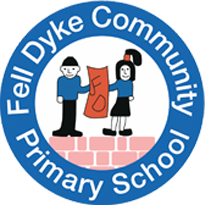Writing
Writing Composition
Our very youngest children focus on mark making within the EYFS environment and writing their name. Writing becomes linked to children’s phonics levels once they start to learn sounds. Some writing tasks are linked to simple whole class texts such as those with repeating refrains or nursery rhymes. In Reception, children see writing modelled by the teacher regularly, including daily routines (counting children in) and linked to other areas of learning e.g. the class text. Children in Reception class practice writing during Read Write Inc. time in ditty books; writing is matched to their phonics level. More able writers also have additional writing sessions, focusing on starting to sequence ideas over more than one sentence – these are still tied to their Read Write Inc. books. Shared writing between the teacher and children takes place in small groups, linked to Read Write Inc. but also using multi-sensory resources to develop language skills familiarity with specific aspects such as initial letter sounds.
In Key Stage 1, our Year 1 children complete writing tasks within the Read Write Inc. sessions – these are clearly linked to the books in the level they are working at. There is an additional whole class writing session for Year 1 pupils, to allow them to explore different purposes and styles for writing. The National Curriculum for Year 1 is quite narrow and focuses on ensuring the fundamentals (e.g. basic punctuation, finger spaces and sequences of sentences) are in place. Year 2 children are taught writing within a specific English lesson.
In Key Stage 2, writing takes place in dedicated sessions. Our model is based on Jane Considine’s The Write Stuff approach, tailored for the children at Fell Dyke. There is a greater focus on writing for a specific audience and purpose as the children get older, as well as improving the children’s vocabulary. Writing is clearly modelled for the children, with teachers ‘thinking aloud’ to help children understand how we make good choices when working independently to the meet the needs of the task.
Across the entire school, texts have been carefully chosen as hooks for writing: to interest the children, inspire ideas, support vocabulary development and acquisition and showcase a range of different types of writing.
The concept of sense of a sentence is embedded early on. This is the idea that a sentence expresses a complete idea (subject and verb agreement and properly punctuated). This is developed year on year as the children move through school.
Spelling
Fluency in early reading helps build familiarity with high frequency words in EYFS. Specific spelling programmes start in Year 2, with Read Write Inc. Spelling, once children have completed the full Read Write Inc. Programme. In Key Stage 2, spellings are evenly shared between year groups based on the national curriculum. The emphasis is on spending longer on one rule and learning it thoroughly through a mixture of clear teaching of a spelling rule, games and opportunities to practice using the spelling and choosing words for our spelling lists than are more frequently used in writing. Our aim is to embed correct spellings within writing, rather than simply learn them for a test.
Handwriting
Children learn initial letter formation as part of Read Write Inc. In Year 1, children transition to the Nelson handwriting scheme, with dedicated teaching time. They are expected to begin to join by the end of Year 2. In Year 3 and Year 4, children’s writing fluency becomes a focus, with consistently joined letters a priority. In Year 5 and Year 6, children are allowed to make small adjustments as part of a personal style, though the Nelson scheme formations continue to be specifically taught.
In order to achieve this, pupils will be taught:
- To develop fine motor control
- The importance of correct posture and paper position
- To use a pen/pencil and to hold it effectively
- To write from left to right and top to bottom on a page
- To understand letters belong to ‘letter families’
- To use yellow tramlined paper in order to form letters of consistent size and shape.
- To start and finish letters correctly using the correct language of letter formation.
- To use the language of writing and how to use the correct terminology, (e.g. ascenders and descenders)
- To put regular spaces between words
- How to form upper and lower case letters
- How to join correctly and understand which letters are best left un joined.
- The importance of neat and clear presentation in order to communicate effectively
This systematic approach to handwriting, along with high quality teacher modelling and expectations ensures the development of handwriting across the Key Stages.
Knowledge, Progress and Assessment
With writing, regular, daily formative assessment takes place to inform planning. Summative assessment takes place at the end of the unit as the children complete their own piece of independent writing, based on their previous weeks’ work. Children are provided with many opportunities to write independently on a near-daily basis. Writing becomes increasingly independent as individual units, and the school year, progress. Teacher judgements are moderated with colleagues at least once per term.
